Podcast 235: Residential Architecture, Rusty Cars, and Ruined Floor Joists
Kiley, Rob, and Patrick hear from listeners about felt paper under flooring and cordless tools before taking questions on weird framing, wet garages, and residential architecture for the rest of us.
Follow the Fine Homebuilding Podcast on your favorite app. Subscribe now and don’t miss an episode:
 |
 |
GC asks if felt under hardwood flooring offgasses and Rick wants to know why he should use cordless tools. Michael asks about sideways studs and Neil wonders if his mom’s wet garage is rusting out her cars. Big Tuna asks what he should do about his butchered floor joist and Rob questions the role of residential architects.
Listener Feedback:
Listener feedback #1: In podcast 233 we were talking about how to prevent hardwood floors from squeaking.
GC on Youtube writes, Just curious if felt paper off gasses or has a smell? I’ve only ever used it on roofs… so never paid attention. I wonder if there are any alternatives for indoor applications.
Listener feedback #2
Rick from Charlotte, NC writes, Greetings FHB Podcast Crew, Hearing stories of batteries on the ‘cast, it seems those working on houses are missing the obvious.
Battery powered drills don’t make sense to me. They’re $200 per set, and the batteries, when they are charged, are often fried. Porter Cable (Stanley, really) sells a standard variable speed 3/8 chuck drill, capable of driving screws and drilling holes for $32. It weighs less, lasts longer, never runs out of juice, has a great variable speed function, but requires power. A small price to pay for all the benefits.
On price, we’re talking 6X the price and 4X the life, for a total of 24X the out of pocket cost. Crazy cost to save the tail inconvenience. As a part-timer, I’m happy with my choice. Of course, full-timers going job to job could easily justify the price.
Keep your attic sealed, Rick.
Editor Updates:
Jeff’s basement remodel
Kiley’s cleaning double-hung window panes
Rob’s cleanup, barn, and garden
Patrick’s windows
 |
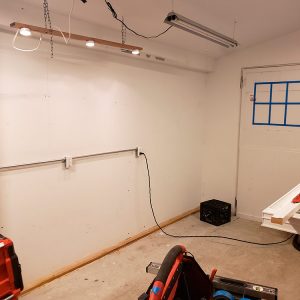 |
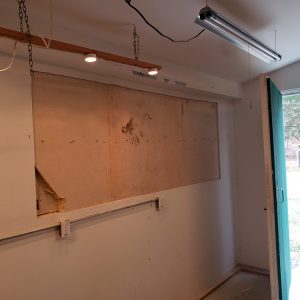 |
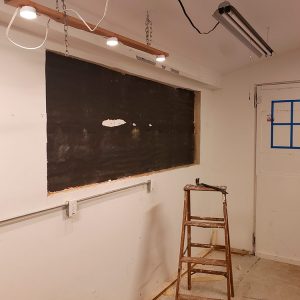 |
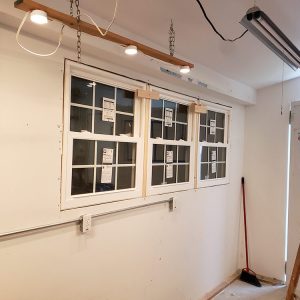 |
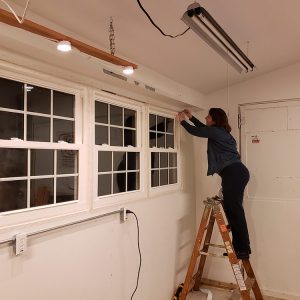 |
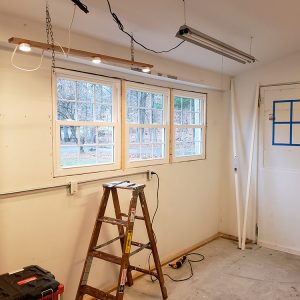 |
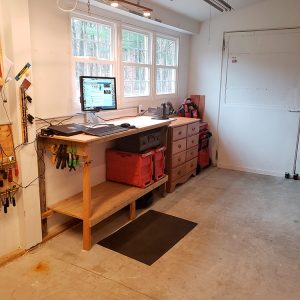 |
Question 1: Is it OK for a shed to have horizontal studs?
Michael from Milton, Ontario writes, Hi FHBP gang, I work as an independent contractor mainly to large animal rescues. While a large portion of my time is spent on fencing, I also do a fair amount of repairing and retrofitting older farm buildings so that they are suitable to house animals safely and comfortably. Having worked on a number of century-old barns, I have seen quite a variety of things. From awe inspiring hand-hewn mortise and tenon craftsmanship, to not-so-pretty but functional DIY farmer fixes, and occasionally downright scary makeshift work that leaves me dumbfounded and running for temporary support columns.
Anyway, recently I encountered something that I hadn’t seen before and I am puzzled. A client of mine bought a 10×10 utility shed which I will retrofit to house birds. This is a common solution for birds because they are small and don’t require any specially designed reinforced walls like pigs and cows do. But when I looked inside the shed, I was really surprised when I saw that the wall studs are oriented “sideways” by comparison to conventional wall framing. The wider side of the stud lays flat against the exterior wall sheathing. Now I had seen this done in interior walls before, but I assumed that it was a non-sructural assembly which saves space by creating a thinner wall.
So, is this method of framing a valid way to build a structural wall? I couldn’t find much info online so I’m turning to you.
Thanks so much for a great podcast! My wife and I look forward to it every week.
Oh, P.S, please let Kylie know that a reel mower sharpening kit can be ordered online for about 25-30 bucks and requires no sharpening experience to use.
Related links:
Question 2: Is my mom’s car rusting out because there’s too much moisture in her garage?
Neil from Sault Ste. Marie, Ontario writes, FHB podcast team, Love, love, love the show. Love the magazine but as much as it inspires me it can also depress me as a lot of the homes and products featured are beyond my average means (what is your target demographic?) The podcast is a little more down to earth – real people, real problems, real budgets (listeners and staff) and real trade off solutions – there ain’t no magic bullet!
Writing to you today because Click and Clack are off the air and I have no one else to turn to to fight the rust. My 80-year young mother lives in a 1960s high rise bungalow built into a hill with a walk-out/drive out basement. She always parks her car in her garage. She had an old, uninsulated, leaky one-piece garage door with no weatherstripping up until 10 years ago when she replaced it with a nice R-13 garage door with weatherstripping all around – way tighter which is a good thing right? Well that is what I thought until the paint starting peeling off the interior masonry walls and her car rotted away to nothing after 10 years (body looked good but the mechanic couldn’t find any solid spots to pick up the car on the hoist).
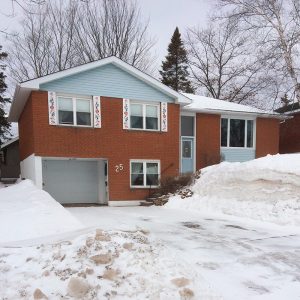 |
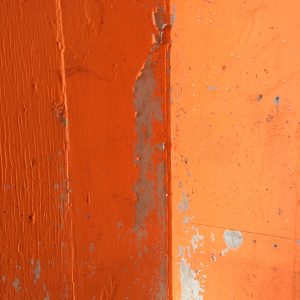 |
You might be thinking that 10 years isn’t so bad for a car living in Northern Ontario’s salt hell but you should know that my mom only drove 23,000km (14,000mi) total in 10 years and in the last several years she stopped taking long trips and only drove about 1,000km (600mi)/year. She walks everywhere!
The garage slab is pretty much always wet so I highly doubt there is any vapor barrier underneath it. And I’m thinking that the tight garage door trapped all the moisture and it condensed on the underside of the car. Am I correct in thinking this is what destroyed the car?
She now has a new (used but low km and rust free) car and I would like it to last the rest of her lifetime and be in good enough shape to pass down to my sister or my kids. I am definitely going to oil spray this car but what to do about the moisture situation? I tried a dehumidifier but it froze up pretty quickly come the fall and it was a chore for my mom to keep emptying it. Thus, I am exploring some other options.
My thoughts so far:
- Park outside. Thing is that is an awful lot of snow to brush off the car and awkward for the snow removal guy to work around in winter never mind a sauna in the summer.
- Remove the weatherstripping and/or adjust the height of the door to stop short of the ground by an inch or two. Thing is my mother is old English lady clean and would be sweeping out the leaves etc. every day. Also, pre new door she would occasionally find a dead mouse in the garage and I don’t want them finding a home in her car – especially given how little she drives it now.
- Paint the floor with epoxy. Thing is that I doubt the paint would stick long term given the moisture (slab only dry for a week or two in the spring and fall).
- Install heavy duty garage vinyl flooring. Thing is a piece big enough to cover the entire floor is pricy. And would I have to worry about mold? Maybe a piece just big enough to put the car on? Would it help if it isn’t wall to wall and sealed where it meets the wall?
- Replace the fixed window in the garage with an operable unit and leave it open year-round? Thing is that the garage ceiling isn’t well insulated and the rooms above always cold – the garage currently provides a bit of a heat buffer. Or is it time to crack open the pensioner’s purse and spray foam the ceiling? Not sure if she would see a payback in her lifetime.
- Install a bath fan vented to the outside wired on a humidistat? Would I have to worry about pulling heat from the house out through cracks? And losing my heat buffer?
- Other ideas?
Curious to hear your thoughts – you all always have something interesting to add. !
Related links:
- Mysterious Moisture in Garage (GreenBuildingAdvisor.com)
- Waterproofing a Basement From the Inside
Question 3: How can a repair the damage a plumber did to this I-joist?
Big Tuna from PA writes, Hi guys and gal, I have been enjoying the podcast!
So, I opened up the drywall under my master shower to repair a leaking drain and found this beautiful chop job done by the original plumber on the TJI joist.
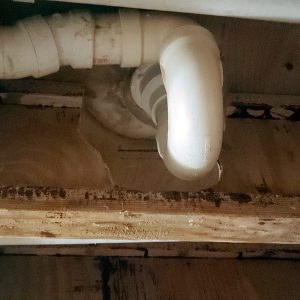 |
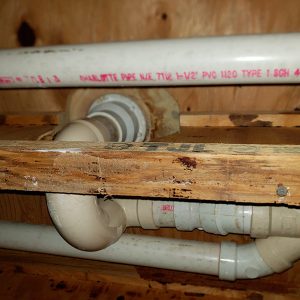 |
What makes me really pissed off is the fact that I am myself, a Master Plumber and have come across this same situation in new construction. The big difference is that I would always get the GC to either let me move the shower, or get the carpenters to head off the joist.
I know the plywood floor is the only thing holding the compression load from the missing top rail. It is a 9 1/2″ TJI with a 15-foot span. The cut on the top of the joist is 3 foot from the bearing wall in the middle of the house.
Its been there for 30 years. Now it’s my headache…. what are my options here?
Thanks.
—Pissed-off plumber from PA
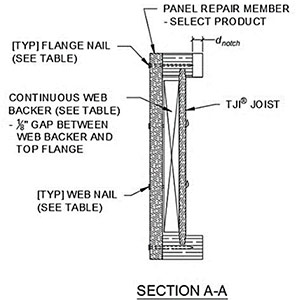
Love listening to you guys… here’s the additional info you requested:
I have a typical 1990’s colonial.
Shower is on 2nd floor.
I have since gotten a couple answers from friends in the industry, such as using plywood as a brace. Fill the TJI, and then use 3/4 ply on both sides (length is at least 4xLong the size of the damage on both sides and glued/nailed/clamped until glue dries.
I also emailed a TJI manufacturer and he wants a lot of info which I am working on.
Looking forward to hear your opinions!
Thanks!!
Related links:
- How to Repair a Butchered Floor Joist
- Flange Notches in TJI Joists – TB-818 (www.weyerhaeuser.com)
Question 4: Should architecture be affordable for everyone?
Rob writes, So you guys have had some recent discussions about affordability and we know that an architect can help folks get the house they need, but is an architect-designed house accessible to the average homeowner or builder? Should it be?
Related links:
- How to How to Afford an Architect
- Creating a House with Built-In Character
- What Makes for Good Design?
End Note: We are offering the domain name “InsulationAdvisors.com” on behalf of our client for $299 USD.
Domain name is suitable for your business and would help you in generating more sales and revenue.
Have a great day.
If you have any questions you would like us to dig into for a future show, shoot an email our way: [email protected].
If we use your question we’ll send you a FHB Podcast sticker!
 #KeepCraftAlive
#KeepCraftAlive
KeepCraftAlive hats help celebrate the value of true craftsmanship–plus 50% of all proceeds from every hat sold go to the #KeepCraftAlive Scholarship Fund, supported by Fine Homebuilding and SkillsUSA.
Buy a #KeepCraftAlive hat or t-shirt
This episode of the Fine Homebuilding podcast is brought to you by ZIP System building enclosures.
By creating the integrated sheathing alternative to “layered” roof and wall assemblies, ZIP System sheathing and flashing options provide a streamlined approach to exterior water, air and thermal management. Did you know ZIP System has been on the market for over 10 years and not only comes with a 180-Day Exposure Guarantee and 30-Year Limited Warranty, but decades of research from the scientists and innovators at Huber Engineered Woods. Learn why so many building teams have make the switch to ZIP System building enclosures and how to get it on your next project at the new ZIPSystem.com.
Also brought to you by Danner:
If you believe in timeless ideas like quality, craftsmanship, and blazing your own path, I want to introduce you to our friends at Danner who sponsor this podcast. A Pacific Northwest original for over 85 years, Danner makes boots for people with purpose in their step. Boots like the new Steelyard family—featuring 8 different models with game-changing comfort, legendary durability, and performance features for any jobsite. Earn a pair and join the family at Danner.com.
Also brought to you by Benjamin Obdyke:
Benjamin Obdyke would like to use the special occasion of our 150th anniversary to thank the nuisances that builders and homeowners despise. Our premium products protect from those pesky things like rain, snow, UV rays and the neighbor’s sprinkler system. Take HydroGap, a drainable housewrap that eliminates moisture from your wall assembly. Or the new InvisiWrap UV, an all-black WRB, perfect for long-term moisture protection behind open joint siding.
Fine Homebuilding podcast listeners can now get 20% off anything in the Taunton store, including the Renovation 5th Edition.
Use the discount code FHBPODCAST to take advantage of this special offer.
We hope you will take advantage of a great offer for our podcast listeners: A special 20% off the discounted rate to subscribe to the Fine Homebuilding print magazine. That link goes to finehomebuilding.com/podoffer.
The show is driven by our listeners, so please subscribe and rate us on iTunes or Google Play, and if you have any questions you would like us to dig into for a future show, shoot an email our way: [email protected]. Also, be sure to follow Justin Fink and Fine Homebuilding on Instagram, and “like” the magazine on Facebook. Note that you can watch the show above, or on YouTube at the Fine Homebuilding YouTube Channel.
The Fine Homebuilding Podcast embodies Fine Homebuilding magazine’s commitment to the preservation of craftsmanship and the advancement of home performance in residential construction. The show is an informal but vigorous conversation about the techniques and principles that allow listeners to master their design and building challenges.
Other related links
-
- All FHB podcast show notes: FineHomebuilding.com/podcast.
- #KeepCraftAlive T-shirts and hats support scholarships for building trades students. So order some gear at KeepCraftAlive.org.
- The direct link to the online store is here.

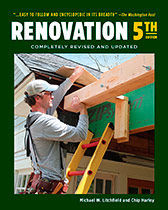






























View Comments
In regards to the Damp Garage.
Put a temperature/humidistat in there to test for high moisture. Check it regularly.
It also appear to be a below grade garage. Check the ground pitch and add gutter extensions / drains around the house. Find the moisture source. Is there any white powder on the concrete walls showing weeping moisture? Floor paint will only create a thin layer of protection. No different than a plastic sheet over the floor. And will fail. You need to make it dryer. Maybe a sump pump.
As for the rust. Canada and the Northeast are loaded with premature rusted cars.
Brine salt sprayed on the roadways is brutal on every vehicle now. 5 yr old pickup trucks in NE are almost unsafe. With new thinner high strengthened steel. It's is like acid on metal.
The best solution I have seen is treat with lanolin based Fluid Film every year or two.
Moisture in gravel may have more to do with color and ground texture than blacktop. Which will always dry first due to color, thermal mass and repellent oil base.